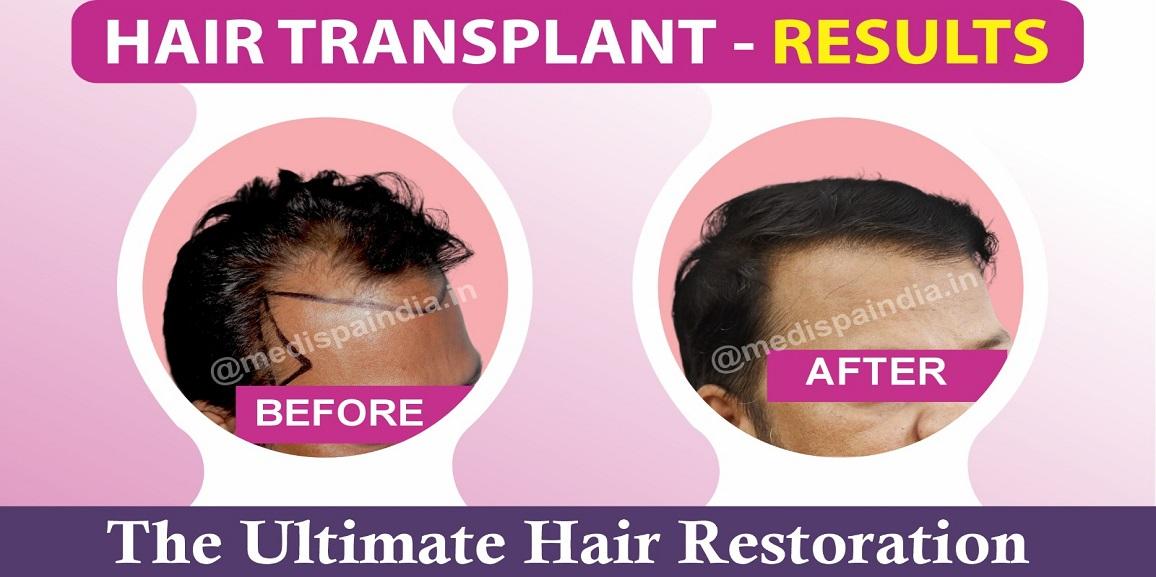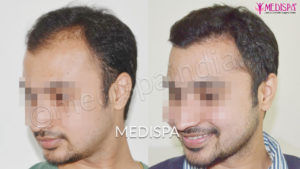
Hair fall or shedding is a natural occurrence that is typically balanced by hair growth. The growth cycle of hair consists of four phases: anagen, catagen, telogen, and exogen. Each hair can be in a different phase of the hair cycle and grows accordingly. As hair follicles mature, they shrink and detach from the scalp.
It is normal to shed 50-100 hairs regularly. However, if you notice an excessive amount of hair on your pillow, in the sink, or while brushing, it is important to be concerned. Many of us tend to ignore the early signs of hair loss, which is not advisable. We often panic when it becomes too late and the hair loss becomes noticeable.
Losing hair and experiencing baldness can be a challenging phase in life, especially when you realize that the situation cannot be reversed. Just imagine how disappointing it would be to see hair growing in other areas but not on your bald spot.
Fortunately, hair transplant is an excellent solution for those facing hair loss.
What causes hair loss?
While there are various factors that can contribute to hair loss, genetics is often the primary culprit. Genetic hair loss, also known as male/female pattern baldness or androgenic alopecia, occurs when there is a genetic dysfunction that is passed down through successive generations from either the paternal or maternal side. This type of hair loss is typically triggered by changes in hormonal levels, specifically DHT (Di-hydro testosterone), which occur over the course of a person’s life, particularly after reaching adulthood.
How does genetic baldness manifest?
In males, pattern baldness usually begins with hair loss in the frontal or vertex area of the head. This initial baldness then progresses, resulting in the merging of the bald areas and leaving a rim of hair at the occipital area (the back and sides of the head). The extent of hair loss in male pattern baldness is classified using the Norwood classification system, which categorizes the stages from I to VII.
On the other hand, female pattern baldness is characterized by central thinning starting from the center of the scalp. The hair loss then extends from the central area to the peripheral regions of the scalp.
Why is only a specific part of the scalp affected?
Male or female pattern baldness typically affects the frontal and central (vertex) areas of the scalp, while the occipital portion (back and sides of the head) remains unaffected. This is because the hair follicles in the frontal and central scalp are sensitive to DHT (dihydrotestosterone) hormone, which leads to thinning and miniaturization of the hair. On the other hand, the hair follicles in the occipital area are resistant to the effects of DHT. Therefore, only certain parts of the scalp experience hair loss while the rest remains intact.
Hair transplant: What is it?
In the past, hair transplant surgery was not very successful in delivering aesthetically pleasing results. However, over the years, there have been significant advancements in hair transplant techniques, making it possible to achieve natural and undetectable results. As a result, we can confidently say that hair transplant surgery can effectively solve the issue of baldness. This minimally invasive cosmetic procedure involves transferring hair follicles from a donor area with sufficient hair density to the recipient bald area, aiming to achieve maximum coverage. Before opting for the procedure, it is important to clarify certain facts to avoid having unrealistic expectations.
Why hair transplant is the perfect option for pattern baldness?
The hair transplant has gained immense popularity and is now the preferred choice among various treatment options. The reasons for its widespread acceptance are as follows:
- The hair transplant procedure provides permanent results by transferring DHT resistant hair follicles to the bald area, which are not affected by genetic factors.
- The results of the hair transplant procedure are incredibly natural-looking and virtually undetectable, especially when performed by highly experienced and skilled professionals.
- Once the procedure is done, the results are long-lasting, and there is no need for frequent consultations unless there is additional hair loss in other areas with existing natural hair.
- The hair transplant procedure requires minimal maintenance and does not necessitate any special interventions after the hair growth has been achieved. The transplanted hair is treated just like natural hair.
- Importantly, there are no associated complications or morbidity with the hair transplant procedure, allowing individuals to resume their regular activities from the very next day.
Overall, the hair transplant procedure offers permanent, natural-looking results with minimal maintenance and no adverse effects, making it an ideal choice for those seeking to address hair loss concerns.
What are the myths prevailing for hair transplant surgery?
- Hair transplantation is a procedure that aims to regrow or regenerate hair on areas affected by baldness. However, it is important to note that there is currently no known procedure that can achieve this outcome.
- Contrary to popular belief, hair transplantation does not provide immediate results. It requires several months of waiting to observe noticeable hair growth, and it may take up to a year to witness complete regrowth.
- While hair transplantation can restore a significant portion of lost hair follicles, it is important to have realistic expectations. Typically, it can restore up to approximately 30% of the lost follicles, which is still a satisfactory outcome.
Medispa clinics in Jaipur and Delhi are renowned for their expertise in performing affordable hair transplant procedures. The cost of hair transplant in Jaipur is highly reasonable, and if you are seeking a cost-effective solution with exceptional results, Medispa hair transplant clinic is the ideal choice. Dr. Suneet Soni, a highly skilled and internationally recognized hair transplant surgeon, is known for his meticulous approach and ability to create natural-looking hairlines. His exceptional skills have earned him a reputation as one of the best hair transplant surgeons.
If you desire a flawless hair transplant, we invite you to visit us and meet Dr. Suneet Soni, a renowned name in the field of hair transplant in India.




